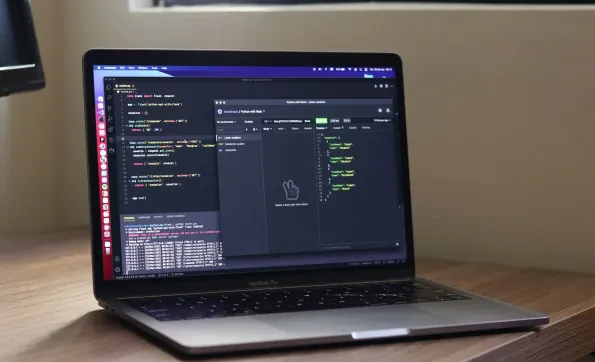In light of recent cybersecurity developments, organizations using the Cisco Smart Licensing Utility (CSLU) are strongly advised to apply urgent patches to address two critical vulnerabilities. Discovered in September 2024 and now actively exploited, these flaws—tracked as CVE-2024-20439 and CVE-2024-20440—allow attackers to gain administrative access to the systems. Exploits have been detected by March 2025, increasing the pressure on affected organizations to act immediately. Security experts emphasize the importance of upgrading CSLU versions 2.0.0, 2.1.0, and 2.2.0 to the latest version available to mitigate the risks.
Understanding the Vulnerabilities
CVE-2024-20439 is a significant flaw involving an undocumented, static administrative credential hardcoded into CSLU versions 2.0.0 through 2.2.0. This vulnerability allows unauthenticated attackers to log into systems with full administrative privileges when CSLU is actively running, leading to a complete system compromise. This severe issue highlights the necessity for immediate action, as the threat landscape continues to evolve rapidly.
Meanwhile, CVE-2024-20440 stems from excessive verbosity in debug logs. By leveraging this flaw, attackers can retrieve log files containing API credentials through crafted HTTP requests, thereby exposing sensitive data. The presence of these flaws in commonly used CSLU versions underscores the critical nature of applying patches promptly. Cisco has confirmed that these vulnerabilities do not depend on each other, meaning each can be exploited independently to gain unauthorized access.
With a CVSS score of 9.8 (Critical) assigned to each vulnerability, the potential impact on affected systems is substantial. Organizations using the impacted versions must prioritize upgrading to the unaffected version, 2.3.0, as soon as possible. This urgency is further supported by multiple cybersecurity authorities’ reports, indicating active exploitation in the wild.
Expert Insights and Responses
Reports from the SANS Internet Storm Center, along with statements from Johannes B. Ullrich, Dean of Research at the SANS Technology Institute, have confirmed the active exploitation of these vulnerabilities by unidentified threat actors. The U.S. Cybersecurity and Infrastructure Security Agency (CISA) has also included CVE-2024-20439 in its Known Exploited Vulnerabilities (KEV) catalog. As a result, federal agencies are mandated to implement the necessary fixes by April 21, 2025. This directive reflects the federal government’s commitment to securing its network infrastructure against increasingly sophisticated cyber threats.
Cisco’s response to these vulnerabilities has been prompt, with updates made available to address these security flaws. The company has underlined that no workarounds exist other than upgrading to CSLU version 2.3.0. Eric Vance’s internal security testing initially uncovered these vulnerabilities, bringing to light the ongoing risks that unpatched systems face. The discovery serves as a stark reminder of the persistent threats in the cybersecurity domain, amplifying the need for regular updates and vigilance.
The proactive measures taken by Cisco and cybersecurity authorities demonstrate the collaborative efforts required to safeguard systems against exploitation. By addressing these vulnerabilities promptly, organizations can significantly reduce the risks associated with unauthorized access and data exposure. This situation highlights the imperative for a robust patch management strategy, ensuring systems remain protected against emerging threats.
Mitigating Future Risks
Organizations must recognize the broader implications of these vulnerabilities beyond immediate system security. The exploitation of CVE-2024-20439 and CVE-2024-20440 demonstrates adversaries’ growing sophistication and ability to capitalize on unpatched systems. Consequently, cybersecurity teams should adopt a proactive stance in their vulnerability management processes, including regular assessments and timely patch applications.
Training and awareness efforts should target both IT staff and end-users to reinforce the importance of cybersecurity hygiene. Regularly updating software, applying security patches, and maintaining strong, dynamic credentials can substantially reduce the attack surface. Additionally, employing advanced security measures such as multi-factor authentication and network segmentation can further fortify defenses against potential breaches.
The ongoing exploitation of these vulnerabilities serves as a critical reminder for organizations to remain vigilant and responsive to emerging threats. By prioritizing security updates and rigorously adhering to best practices, organizations can mitigate the risks posed by these and future vulnerabilities. The collaborative efforts between cybersecurity experts and the broader community highlight the importance of collective action in addressing the evolving threat landscape.
Key Takeaways
Given recent advancements and incidents in cybersecurity, it’s crucial for organizations utilizing the Cisco Smart Licensing Utility (CSLU) to urgently apply security patches to address two significant vulnerabilities. Identified in September 2024 and currently being actively exploited, these vulnerabilities—designated as CVE-2024-20439 and CVE-2024-20440—enable attackers to gain administrative control over systems. Exploits were detected by March 2025, amplifying the urgency for affected organizations to act promptly. Security specialists highlight the necessity of upgrading CSLU versions 2.0.0, 2.1.0, and 2.2.0 to the most recent release available to mitigate these risks. This update aims to protect sensitive data and maintain the integrity of systems, ensuring that hackers cannot leverage these vulnerabilities to their advantage. To safeguard their infrastructure, organizations should follow the recommended procedures and keep their systems updated with the latest patches and security measures.













